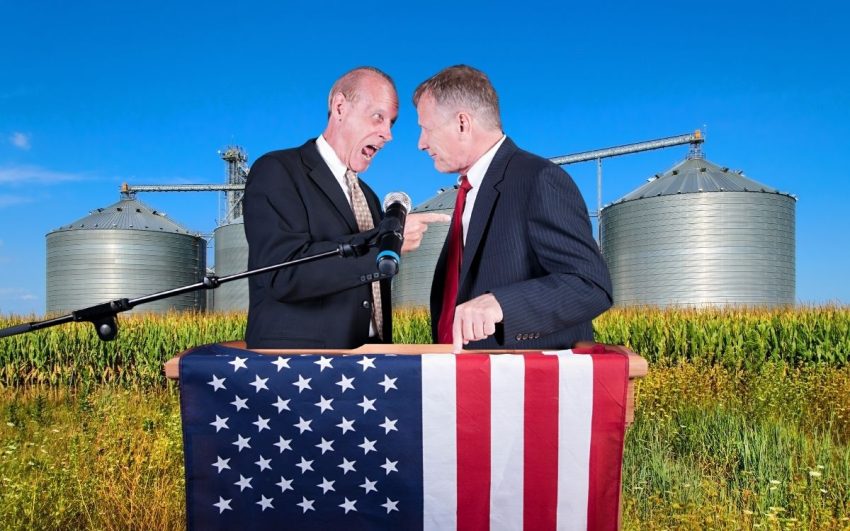For decades, the federal government has poured billions into subsidies and programs designed to encourage massive production of these commodities, turning the United States into a global powerhouse in their cultivation. Yet, in a stunning reversal, the same government has unleashed trade policies that shattered key international markets, leaving farmers scrambling for survival. Now, as bailout plans funded by tariff revenues emerge, the approach feels profoundly misguided, benefiting input suppliers while pushing growers toward financial ruin. Adding insult to injury, Congress dithers on a new farm bill, potentially delaying critical reforms once more amid broader political distractions.
The story begins with the incentives that propelled corn and soybean production to extraordinary heights. Through the farm bill and related programs, the government provides price supports, crop insurance discounts, and direct payments that favor these crops above others. In 2024 alone, corn farms received $3.2 billion in federal subsidies, accounting for over 30 percent of all such aid. Soybeans follow closely, with cumulative subsidies reaching $44.9 billion from 1995 to 2021. These supports, including mechanisms like Price Loss Coverage and Agricultural Risk Coverage, allow farmers to lock in minimum revenues even when market prices dip. The result has been a triumph of efficiency and scale. In 2025, U.S. corn production is forecast at 16.8 billion bushels, a 13 percent increase from the previous year, with projected yields hitting record levels, like the 188.8 bushels per acre USDA estimate. Soybean yields are similarly impressive, projected at 53.6 bushels per acre, underscoring America’s dominance in these markets. Farmers have invested heavily in technology, land, and equipment to meet this encouraged output, creating a system where corn and soybeans dominate vast swaths of the Midwest.
But this success story unraveled when government trade policies intervened. The U.S.-China trade war, reignited under the current administration with tariffs imposed in February 2025, prompted Beijing to retaliate by shunning American soybeans entirely, marking the first such absence since the 1990s. China, once the buyer of over half of U.S. soybean exports, shifted to suppliers like Brazil, causing prices to plummet and leaving stockpiles unsold. Corn exports suffered too, as broader retaliatory measures disrupted global flows. In the 2023-2024 marketing year, China accounted for $13.2 billion in U.S. soybean sales, a figure now at risk of evaporating. Farmers warn they cannot survive prolonged disruptions, with the trade conflict making U.S. products 20 percent more expensive than competitors’. This self-inflicted wound has devastated rural economies, turning government-fueled abundance into a glut that depresses domestic prices.
In response, the administration is floating plans to use revenue from those very tariffs to bail out affected farmers, an approach that strikes many as fundamentally flawed. Officials are discussing up to $10 billion in direct aid through programs like the Emergency Commodity Assistance Program, explicitly linking it to tariff proceeds. This echoes the 2018-2019 trade war, when $23 billion in taxpayer funds, largely from tariffs, compensated for losses via the Market Facilitation Program. Critics argue this cycle, where policies create harm only to patch it with borrowed or redirected money, is inefficient at best. Why incentivize overproduction, sabotage markets, and then subsidize the fallout? It perpetuates dependency without addressing root causes, all while adding to the national debt.
Meanwhile, big agriculture companies thrive amid the chaos. Firms like Bayer (which absorbed Monsanto), Corteva Agriscience, and Syngenta control vast shares of seeds, pesticides, and fertilizers, with four companies holding 70 percent of the global pesticide market. In the U.S., Bayer and Corteva dominate 72 percent of corn seeds and 66 percent of soybeans. Their profits surged during past trade tensions, as farmers still needed inputs regardless of export woes; Bayer’s biologicals sales hit $214 million in 2022, while Corteva and Syngenta reported hundreds of millions more in 2023. These giants benefit from the status quo, pushing genetically modified seeds and chemicals that lock farmers into high-cost cycles, even as commodity prices tank.
Farmers, however, teeter on the brink. Bankruptcies among small operations surged to 173 in the first half of 2025, the highest since 2020, driven by soybean and corn producers hammered by low prices and escalating costs. Corn farmers face losses exceeding $160 per acre this year, with debts mounting and margins vanishing. Many blame monopolistic practices by input suppliers, which control 70 to 90 percent of key markets, exacerbating the squeeze. Without relief, more family farms could vanish, consolidating power further in corporate hands.
Looming over this is the uncertain fate of the farm bill. The 2018 legislation, extended through the American Relief Act of 2025 signed in December 2024, faces another deadline on September 30, 2025. Congress has delayed a comprehensive update for years, with lawmakers now warning of financial calamity without extra aid. Yet, amid partisan battles over tariffs, appropriations, and other priorities, including debates on limiting individual rights, there’s little momentum for passage. Republicans and administration officials are exploring short-term fixes, but a full bill seems elusive, likely leading to yet another extension by December 31 at the latest. This inaction reflects broader incompetence, prioritizing political theater over the needs of rural America.
In the end, American agriculture’s plight reveals a system rigged against the very producers it claims to support. Government incentives built an empire of corn and soybeans, only for trade aggressions to topple it, with bailouts offering temporary bandages funded by the same disruptive tools. As big ag cashes in and farmers fight for survival, the question remains: Will policymakers finally chart a coherent course, or continue kicking the can, leaving the heartland to wither


